How to Master the Art of Machine Quilting
Machine quilting is not just a hobby; it's a vibrant expression of creativity that allows you to transform fabric into stunning works of art. Whether you’re a seasoned sewist or a curious beginner, mastering the art of machine quilting can be a fulfilling journey. Imagine the satisfaction of seeing your creative ideas come to life, stitched together with precision and flair. In this article, we’ll explore essential techniques, tips, and tools that will help you become proficient in machine quilting, making the process not only enjoyable but also rewarding.
Before we leap into the exciting world of advanced techniques, it’s essential to get a solid grip on the basics. Think of machine quilting as building a house; you need a strong foundation before you can add the beautiful decor. Familiarize yourself with key terminology, the different types of machines available, and the necessary supplies that every beginner should have. Knowing the lingo and having the right tools can make your quilting experience much smoother and more enjoyable.
Your sewing machine is your best friend in the quilting world, and selecting the right one is crucial for your success. Just like picking the right pair of shoes can make or break your day, the right machine can elevate your quilting experience. Here are some key features to consider when choosing your machine:
- Stitch Quality: The precision of your stitches can greatly affect the overall appearance of your quilt.
- Throat Space: A larger throat space allows for bigger quilts and more complex designs.
- Quilting Capabilities: Look for features like adjustable speed and stitch patterns that cater to quilting.
Not all quilting machines are created equal. Understanding the differences between them is key to making an informed choice. Let’s break it down:
Domestic machines are the workhorses of the quilting world. They are versatile, user-friendly, and perfect for beginners. These machines can handle a variety of projects, from piecing to quilting. However, they do have limitations when it comes to handling larger quilts. Think of them as the reliable sedan of sewing machines – great for everyday use but not necessarily built for heavy-duty tasks.
On the other end of the spectrum, we have longarm machines. These beasts come with a larger workspace and advanced features, making them ideal for experienced quilters who want to take their craft to the next level. While they require a significant investment, the benefits they offer in terms of efficiency and creativity can be well worth it. Picture yourself in a spacious studio, gliding your fabric under a longarm machine – it’s a quilter’s dream!
If you’re looking for something in between, midarm machines offer a perfect balance. They provide more workspace than domestic machines without the full commitment of a longarm. This makes them an excellent choice for intermediate quilters who want to expand their capabilities without breaking the bank. Think of midarm machines as the sporty coupe of quilting machines – fun, versatile, and perfect for those who want a little more room to maneuver.
Having the right tools at your disposal is crucial for a successful quilting experience. Just like a chef needs the right knives to create a culinary masterpiece, a quilter needs quality supplies to craft their quilts. Here are some must-have supplies:
- Threads: The right thread can significantly impact your quilt's appearance and durability. Choose threads that complement your fabric and withstand the test of time.
- Batting: This material adds warmth and texture to your quilt. Understanding the different types of batting can help you choose the best one for your project.
- Quilting Feet: Specialized feet can enhance your quilting techniques, making it easier to achieve stunning results.
Thread selection is not just a minor detail; it can make or break your quilt. Different types of thread serve various purposes, from decorative to functional. For instance, cotton threads are great for piecing, while polyester threads are excellent for durability. Understanding these differences will ensure your quilts not only look good but also last long.
Batting plays a crucial role in your quilt’s overall feel and warmth. With various materials like cotton, polyester, and wool available, it’s essential to choose one that aligns with your project’s needs. For example, cotton batting is breathable and great for warm climates, while polyester batting provides additional loft and warmth. Think of batting as the cozy blanket that wraps around your quilt, adding both comfort and character.
Mastering various quilting techniques is the key to achieving beautiful results. Each technique offers a unique way to express your creativity and enhance your quilts. Let’s explore some essential methods:
Free-motion quilting is where the magic happens. This technique allows you to create intricate designs, giving you the freedom to let your creativity shine. To master this skill, practice is essential. Start with simple patterns and gradually work your way up to more complex designs. Remember, it’s all about enjoying the process and letting your imagination roam free!
If you prefer a more structured approach, walking foot quilting is your go-to technique. This method provides even stitching, making it perfect for straight lines and simple patterns. It’s straightforward and effective, allowing you to achieve stunning results with ease. Think of it as the reliable GPS guiding you through the quilting landscape.
As you embark on your machine quilting journey, you may have some questions. Here are a few frequently asked questions that can help clarify your path:
- What is the best machine for beginners? A domestic sewing machine is typically the best choice for beginners due to its versatility and ease of use.
- How do I choose the right batting? Consider the climate and intended use of your quilt. Cotton is breathable, while polyester provides more warmth.
- Can I use my regular sewing machine for quilting? Yes, many domestic machines can handle quilting, especially with the right feet and settings.
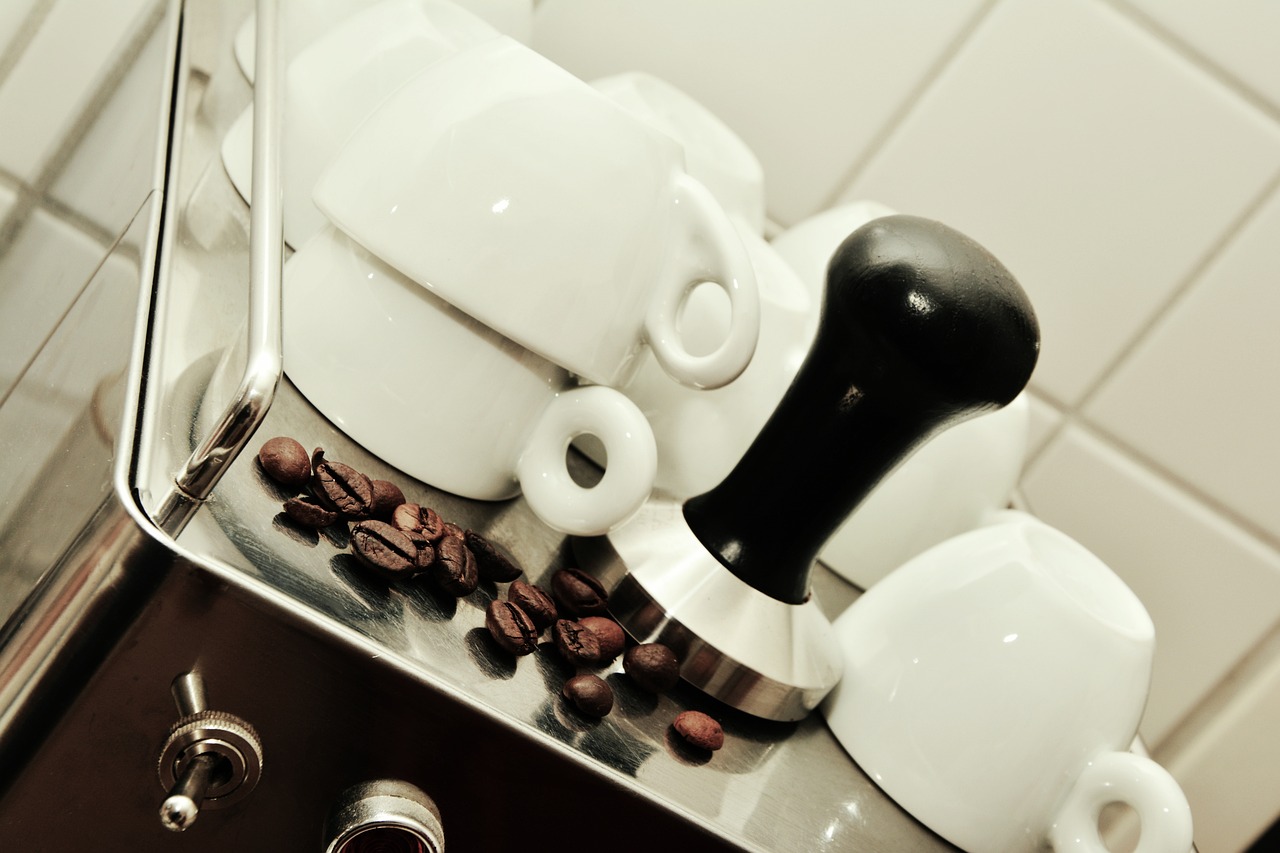
Understanding Machine Quilting Basics
Before you embark on your exciting journey into the world of machine quilting, it's essential to grasp the fundamental concepts that form the backbone of this art. Imagine standing at the edge of a vast ocean of fabric, patterns, and threads, ready to dive in but needing to know how to swim first! Understanding the basics will not only give you confidence but also enhance your creativity as you quilt.
First, let’s break down some key terminology that you’ll frequently encounter. Terms like "quilt sandwich" refer to the layers of fabric that you’ll sew together: the top layer (your design), the batting (the middle layer providing warmth), and the backing fabric (the underside of your quilt). Each layer plays a crucial role in the final product, much like the ingredients in a delicious recipe!
Next, you’ll want to familiarize yourself with the types of machines available for quilting. Not all sewing machines are created equal, and understanding the differences can save you a lot of frustration down the line. The two primary categories are domestic sewing machines and longarm machines, each with its own set of features and capabilities. Domestic machines are perfect for beginners, allowing you to create beautiful quilts without overwhelming complexity. On the other hand, longarm machines offer a larger workspace and advanced features, making them ideal for those who have mastered the basics and are ready to tackle more intricate designs.
In addition to the machine type, you’ll need to gather some necessary supplies. A good quality sewing machine is essential, but don’t forget about the other tools that will make your quilting experience smoother. Items like rotary cutters, cutting mats, quilting rulers, and pins are just as important as your sewing machine. Each tool serves a specific purpose, much like a musician needs various instruments to create a symphony.
Equipping yourself with the right supplies is only part of the equation; knowing how to use them effectively is where the magic happens. As you dive deeper into machine quilting, you'll discover that practice is your best friend. Set aside time to play with your machine, experiment with different stitches, and get comfortable with the feel of the fabric under your hands. Remember, every expert was once a beginner, and the only way to improve is to keep trying.
In summary, understanding the basics of machine quilting is your first step toward creating stunning quilts. Familiarize yourself with the terminology, choose the right machine, gather essential supplies, and practice your techniques. By laying this groundwork, you’ll be well on your way to transforming your creative ideas into beautiful quilts with ease and precision. Ready to take the plunge? Let’s move on to selecting the right machine next!
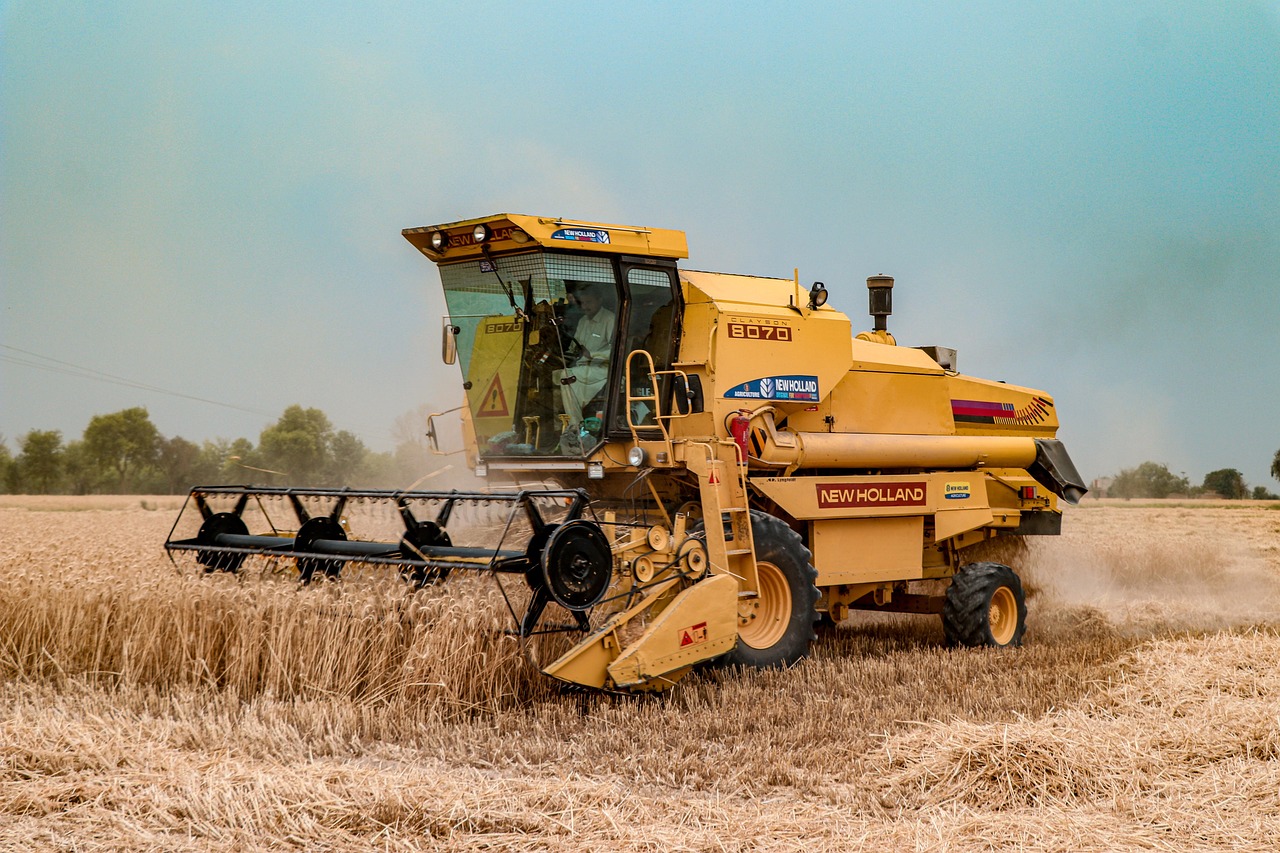
Choosing the Right Machine
When it comes to machine quilting, selecting the right sewing machine can feel like finding a needle in a haystack. With so many options available, how do you know which one will help you create those stunning quilts you've envisioned? The key is to understand the essential features that can make your quilting journey smoother and more enjoyable. A good quilting machine should not only meet your current needs but also grow with you as your skills develop.
First and foremost, consider the stitch quality. This is crucial because the quality of your stitches directly impacts the overall appearance of your quilt. Look for machines that offer a variety of stitch options, including decorative stitches, which can add a unique touch to your projects. Additionally, pay attention to the throat space. This is the area to the right of the needle, and having ample throat space is essential for maneuvering larger quilts. If you find yourself working on quilts that are larger than a throw size, a machine with a wider throat space will save you a lot of frustration.
Another important feature to consider is the machine's quilting capabilities. Some machines come equipped with specialized quilting feet, which can make a significant difference in your quilting experience. For example, a walking foot is invaluable for straight-line quilting, while a free-motion foot allows for creative designs. Understanding the types of quilting you want to do will help you narrow down your options.
As you explore different machines, you may come across various types, including domestic, longarm, and midarm machines. Each serves a unique purpose:
- Domestic Sewing Machines: Ideal for beginners, these machines are versatile and suitable for various sewing projects.
- Longarm Quilting Machines: Perfect for experienced quilters, these machines offer a larger workspace and advanced features for intricate designs.
- Midarm Quilting Machines: A middle ground between domestic and longarm, these provide extra space without the full commitment of a longarm machine.
Ultimately, the right machine for you will depend on your quilting style, budget, and the types of projects you plan to tackle. It’s wise to test out various machines at your local sewing store to see which one feels comfortable and intuitive to use. Remember, investing in a quality machine is investing in your quilting future. Don't rush your decision; take the time to find a machine that resonates with your creative spirit and meets your practical needs.
1. What is the best machine for a beginner quilter?
For beginners, a domestic sewing machine with a good reputation for stitch quality and ease of use is recommended. Look for features like a walking foot and basic quilting stitches.
2. How much should I spend on a quilting machine?
The price can vary widely based on the machine type and features. For a decent domestic machine, you might spend anywhere from $200 to $1,000, while longarm machines can range from $5,000 to $20,000 or more.
3. Can I use a regular sewing machine for quilting?
Absolutely! Many quilters start with a regular sewing machine. With the right attachments, like a walking foot or free-motion foot, you can create beautiful quilts.
4. What features should I look for in a quilting machine?
Look for features like adjustable stitch length, a wide throat space, a variety of stitch options, and compatibility with quilting feet.

Types of Quilting Machines
When it comes to quilting, the type of machine you choose can significantly affect your experience and the quality of your finished project. There are three main types of quilting machines to consider: domestic sewing machines, longarm machines, and midarm machines. Each serves different purposes and caters to various skill levels, so understanding their unique features is essential for making an informed decision.
Domestic sewing machines are the most common choice for beginners and hobbyists. They are versatile and can handle a variety of sewing tasks beyond quilting, making them a practical investment. Typically, these machines come with a range of stitch options and can accommodate small to medium-sized quilts. However, they do have limitations, particularly in throat space, which can make quilting larger projects a bit challenging. If you're just starting your quilting journey, a domestic machine can be a fantastic way to learn the ropes without overwhelming yourself with complicated features.
On the other end of the spectrum, we have longarm quilting machines. These machines are specifically designed for quilting and offer a larger workspace, making them ideal for experienced quilters tackling bigger projects. Longarm machines allow for advanced features such as automated stitching patterns and precise tension control, which can elevate your quilting game to a whole new level. However, they come with a higher price tag and require a substantial investment, both financially and in terms of space. If you're serious about quilting and plan to take on large quilts regularly, a longarm machine might be worth considering.
In between the two extremes lies the midarm quilting machine. These machines strike a balance between the accessibility of domestic machines and the advanced capabilities of longarm machines. Midarm machines offer more throat space than domestic machines, allowing for larger projects while still being manageable for quilters who may not need the full functionality of a longarm. They are an excellent option for intermediate quilters looking to expand their skills without the commitment of a longarm setup.
To summarize, here’s a quick comparison of the three types of quilting machines:
| Type of Machine | Throat Space | Skill Level | Price Range |
|---|---|---|---|
| Domestic Sewing Machine | Small to Medium | Beginner | Low to Moderate |
| Longarm Quilting Machine | Large | Advanced | High |
| Midarm Quilting Machine | Medium to Large | Intermediate | Moderate to High |
Ultimately, the choice of quilting machine depends on your personal preferences, budget, and the types of projects you plan to undertake. Whether you're just starting out or looking to upgrade your current setup, understanding the differences between these machines will help you find the perfect fit for your quilting journey.
- What is the best type of quilting machine for beginners? A domestic sewing machine is often recommended for beginners due to its versatility and ease of use.
- Are longarm machines worth the investment? If you plan to quilt large projects frequently, a longarm machine can be a worthwhile investment.
- Can I quilt with a regular sewing machine? Yes, many quilters successfully use regular sewing machines for quilting, especially for smaller projects.
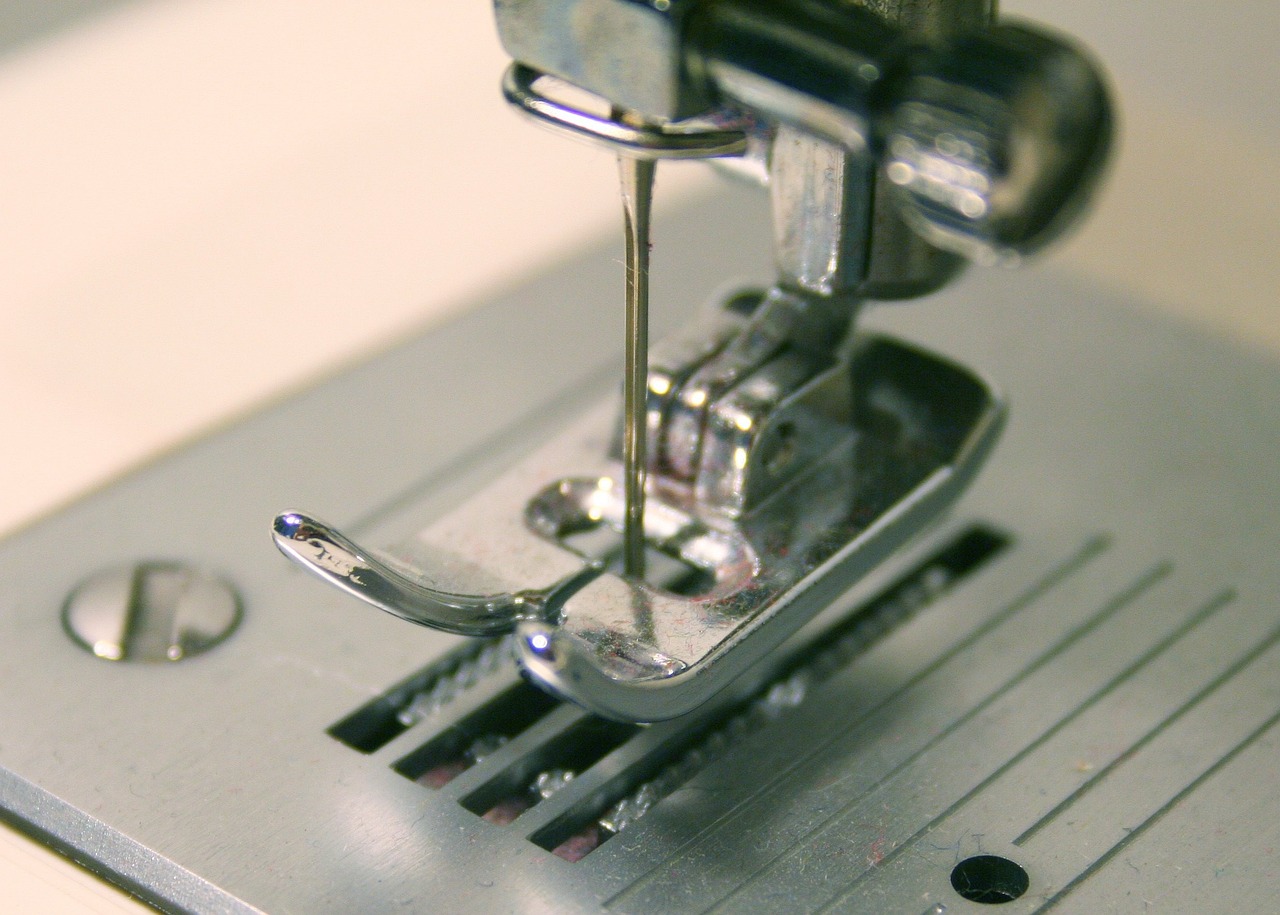
Domestic Sewing Machines
When it comes to machine quilting, domestic sewing machines are often the first choice for beginners and hobbyists alike. These machines are not only versatile but also user-friendly, making them an excellent starting point for those looking to dive into the world of quilting. With a variety of features designed to accommodate different quilting styles, a domestic sewing machine can be your best companion as you embark on your quilting journey.
One of the standout features of domestic sewing machines is their affordability. Unlike specialized longarm machines, which can cost thousands of dollars, many domestic machines are available at a fraction of the price. This accessibility allows more people to explore their creative potential without breaking the bank. Additionally, domestic machines often come with a range of built-in stitches, allowing you to experiment with different patterns and designs right out of the box.
However, it's essential to understand that while domestic sewing machines are great for beginners, they do have some limitations compared to their longarm counterparts. For instance, the throat space—the area between the needle and the body of the machine—can be quite limited. This may restrict your ability to work on larger quilts, as maneuvering bulky fabric can become challenging. Nevertheless, many quilters find that with a bit of practice and the right techniques, they can achieve stunning results even with a domestic machine.
When choosing a domestic sewing machine for quilting, consider the following features:
- Stitch Quality: Look for a machine that offers a variety of stitch options, including straight, zigzag, and decorative stitches.
- Feed Dogs: Ensure the machine has adjustable feed dogs to help with fabric movement during quilting.
- Walking Foot: A walking foot attachment is essential for even stitching, especially when working with multiple layers.
- Bobbin System: An easy-to-load bobbin system can save you time and frustration.
In summary, domestic sewing machines provide a fantastic entry point into the world of quilting. They offer a balance of affordability, versatility, and ease of use, making them perfect for those just starting their quilting adventures. As you gain experience and confidence, you may find yourself exploring more advanced machines, but for now, a domestic sewing machine will serve you well as you create beautiful quilts that showcase your unique style.
Q: Can I use a domestic sewing machine for quilting large projects?
A: While it is possible, working on large quilts can be challenging due to the limited throat space. You may need to use techniques like rolling or folding the quilt to manage the bulk.
Q: What accessories do I need for quilting with a domestic machine?
A: Essential accessories include a walking foot, quilting needles, quilting thread, and a rotary cutter. These tools will enhance your quilting experience and improve your results.
Q: Are there specific brands of domestic sewing machines that are better for quilting?
A: Brands like Brother, Janome, and Bernina are well-regarded in the quilting community for their reliability and features tailored to quilters.
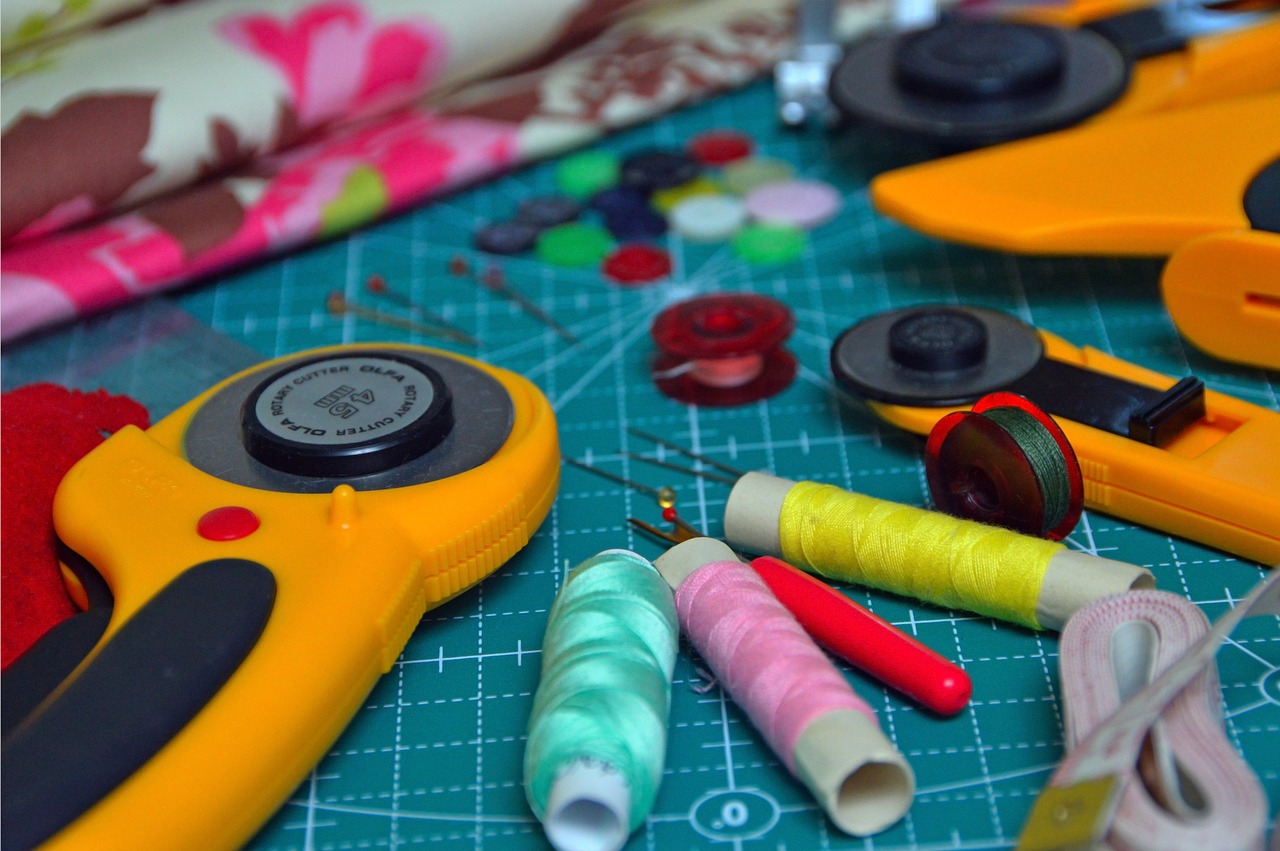
Longarm Quilting Machines
When it comes to quilting, are the superheroes of the sewing world. These machines are designed with a larger workspace, allowing you to handle larger quilts with ease. If you’ve ever felt overwhelmed by the size of your quilting projects, a longarm machine might just be the solution you need. Think of it as upgrading from a compact car to a spacious van; it makes all the difference in comfort and capability!
One of the most significant advantages of longarm machines is their ability to provide advanced features that cater to both creativity and efficiency. Many models come equipped with computerized systems that allow for intricate designs and patterns to be stitched effortlessly. Imagine being able to create complex designs without the tedious handwork—it’s like having a magic wand at your fingertips! However, this advanced technology does come with a price tag that reflects its capabilities. It’s essential to weigh the investment against your quilting goals.
For those who might be wondering, longarm machines typically operate on a frame system. This means that the quilt is loaded onto a frame, and the machine moves across the fabric, rather than the fabric moving through the machine. This method allows for greater control and precision, resulting in beautifully finished quilts. If you're serious about quilting and want to take your skills to the next level, investing in a longarm machine could be a game-changer.
However, before you rush out to buy one, consider your quilting habits. Are you planning to quilt large projects frequently? If so, a longarm machine could be worth every penny. But if you’re more of a casual quilter who enjoys smaller projects or just starting out, you might want to explore other options first.
In summary, longarm quilting machines are fantastic tools for serious quilters, providing the space and technology needed to create stunning quilts. They can help you unleash your creativity and tackle larger projects with confidence. Just remember, with great power comes great responsibility—make sure you’re ready to commit to mastering this incredible machine!
- What is the difference between a longarm machine and a domestic sewing machine? Longarm machines have a larger throat space and are designed to handle larger quilts more efficiently, while domestic machines are more versatile for various sewing tasks.
- Are longarm machines easy to use? While they can be more complex than domestic machines, many come with user-friendly features and tutorials to help you get started.
- Can I use a longarm machine for smaller projects? Yes, you can use a longarm machine for smaller projects, but it’s essential to consider whether it’s the right tool for your specific needs.
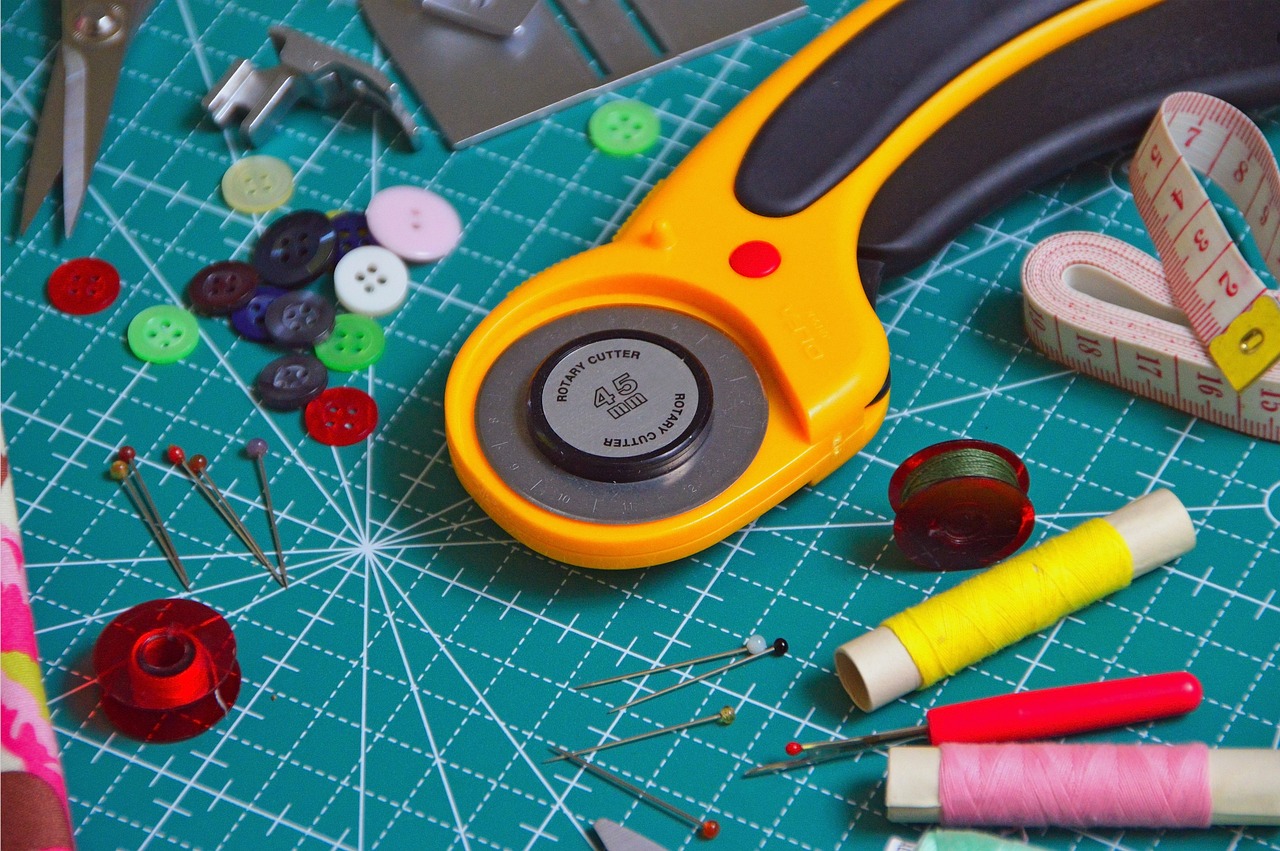
Midarm Quilting Machines
When it comes to the world of machine quilting, occupy a unique space that caters to quilters seeking a balance between versatility and workspace. These machines are designed to provide more room than your standard domestic sewing machine, yet they are not as large or complex as longarm machines. This makes them an excellent choice for intermediate quilters who are ready to elevate their skills without diving into the hefty investment of a longarm setup.
One of the standout features of midarm machines is their workspace size. Typically, they offer a throat space ranging from 12 to 20 inches, providing ample room to maneuver larger quilts. This extra space is crucial when you’re working on intricate designs or larger projects, as it allows for smoother handling and reduces the risk of fabric bunching or shifting. Imagine trying to quilt a king-sized quilt on a tiny domestic machine—frustrating, right? Midarm machines make this challenge a thing of the past.
Another aspect that makes midarm machines appealing is their ease of use. They often come with user-friendly features that help quilters transition smoothly from domestic machines. Many models are equipped with adjustable speed settings, which allow you to control the pace of your quilting, making it easier to achieve the precision you desire. Additionally, they frequently include built-in stitch regulators, ensuring consistent stitch length regardless of your sewing speed. This is especially beneficial when you're experimenting with more complex quilting patterns.
However, while midarm machines offer a great balance, it’s essential to consider the investment involved. Prices typically range from $2,000 to $6,000, depending on the features and brand. While this is a significant investment, many quilters find that the improved capabilities and results justify the cost. Think of it as upgrading from a standard bicycle to a high-performance road bike; it may require a bigger budget, but the enhanced experience and results can be well worth it.
In terms of features, midarm machines often include:
- Adjustable Frame: Many come with a frame that can be adjusted to suit your quilting style.
- Variety of Stitch Options: From straight lines to intricate free-motion designs, the options are plentiful.
- Accessories: Most midarm machines come with additional feet and tools to enhance your quilting experience.
Ultimately, choosing a midarm quilting machine can be a game-changer for your quilting journey. It allows you to tackle larger projects with confidence while still being manageable for someone who may not be ready to commit to a longarm machine. So, if you’re feeling the itch to take your quilting to the next level, a midarm machine might just be the perfect companion for you!
1. What is the difference between midarm and longarm quilting machines?
Midarm machines provide a balance of workspace and control, suitable for intermediate quilters, while longarm machines offer even larger workspaces and advanced features for experienced quilters.
2. Can I use a midarm machine for free-motion quilting?
Absolutely! Midarm machines are designed to handle free-motion quilting effectively, allowing you to explore intricate designs without limitations.
3. Are midarm machines easy to learn for beginners?
While midarm machines are more advanced than domestic machines, many come with user-friendly features that make them accessible for beginners willing to learn and practice.

Essential Tools and Supplies
When it comes to machine quilting, having the right tools and supplies can make all the difference between a frustrating experience and a joyful one. Imagine trying to paint a masterpiece without your brushes or canvas; that's what quilting without the proper equipment feels like. So, let’s dive into the essentials that will elevate your quilting game and transform your creative visions into stunning quilts.
First and foremost, you'll need a reliable sewing machine that suits your quilting style. While we touched on this in the previous section, it’s important to reiterate that not all machines are created equal. Look for features like stitch quality, throat space, and quilting capabilities. A larger throat space is particularly beneficial for managing bigger quilts, allowing you to maneuver fabric with ease.
Next on the list is thread. Choosing the right thread is crucial because it not only affects the quilt's appearance but also its durability. There are various types of thread to consider, including cotton, polyester, and specialty threads like metallic or variegated options. Each type has its own unique characteristics and best applications. For instance, cotton thread is a popular choice for quilting due to its strength and ability to blend seamlessly with fabric. On the other hand, polyester offers a bit more stretch, making it ideal for projects that require flexibility.
Another essential supply is batting, which provides warmth and texture to your quilts. Batting comes in different materials, such as cotton, polyester, and wool, each affecting the quilt's feel and weight. For example, cotton batting gives a more traditional look and feel, while polyester batting can create a fluffier appearance. It's important to consider the type of project you're working on when selecting batting, as it can significantly impact the final outcome.
Additionally, don't forget about quilting feet! These specialized feet are designed to enhance your quilting experience, allowing for more precise stitching. There are various types of quilting feet, including walking feet, free-motion feet, and even quarter-inch feet for precise seam allowances. Each type serves a different purpose and can help you achieve specific effects in your quilting.
Here's a quick overview of some essential tools and supplies:
| Tool/Supply | Description |
|---|---|
| Sewing Machine | A machine with quilting capabilities and sufficient throat space. |
| Thread | Choose between cotton, polyester, or specialty threads based on your project. |
| Batting | Available in cotton, polyester, and wool; affects warmth and texture. |
| Quilting Feet | Specialized feet for precise stitching and various quilting techniques. |
In addition to these primary supplies, consider investing in a rotary cutter, cutting mat, and quilting ruler. These tools will help you cut fabric accurately and efficiently, ensuring your pieces fit together perfectly. Remember, quilting is not just about sewing; it’s about creating a cohesive and beautiful piece of art that you can be proud of.
As you gather your tools and supplies, keep in mind that quality matters. Investing in high-quality materials will not only improve your quilting experience but also enhance the longevity and beauty of your finished projects. After all, who doesn’t want their quilts to stand the test of time and be cherished for generations?
Q: What is the best thread for machine quilting?
A: Cotton thread is often recommended for its strength and compatibility with most fabrics. However, polyester thread can also be a great choice for its durability and stretch.
Q: How do I choose the right batting for my quilt?
A: Consider the desired warmth and texture of your quilt. Cotton batting is ideal for a traditional feel, while polyester offers a fluffier texture. Wool batting is excellent for insulation and drape.
Q: Can I use my regular sewing machine for quilting?
A: Yes, many domestic sewing machines are suitable for quilting, especially if they have the right features like a walking foot and sufficient throat space.
Q: What is free-motion quilting?
A: Free-motion quilting is a technique that allows you to move the fabric freely under the needle, enabling intricate designs and patterns to be stitched onto the quilt.
Q: How often should I change my sewing machine needle when quilting?
A: It’s a good practice to change your needle every 8-10 hours of sewing or if you notice any skipped stitches or fabric snagging.
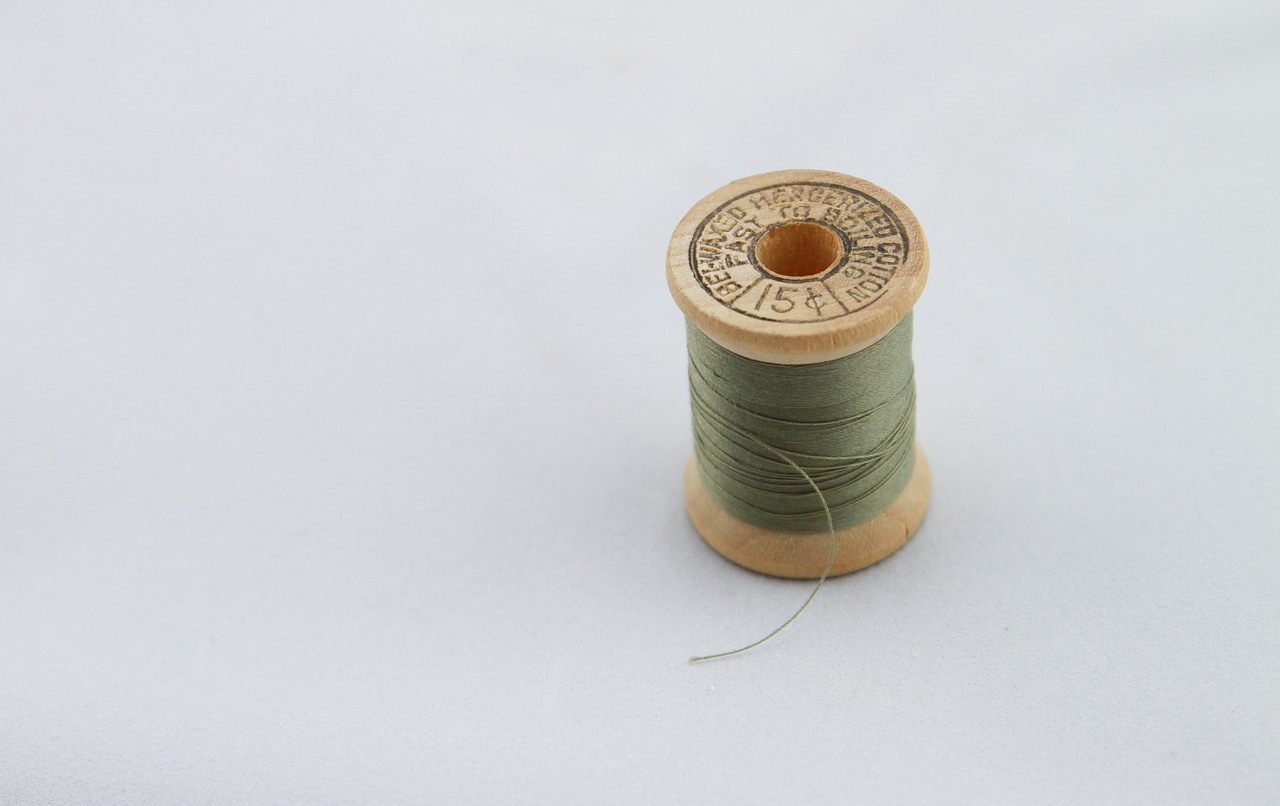
Choosing the Right Thread
When it comes to machine quilting, the thread you choose is more than just a simple afterthought; it's a vital component that can dramatically influence the overall appearance and durability of your quilt. Think of thread as the backbone of your quilting project—without the right support, your beautiful fabric creations may not hold together as you envision. So, how do you choose the right thread? Let's dive into the key factors to consider.
First off, you need to think about the material of the thread. Threads come in various materials including cotton, polyester, and blends. Each type has its unique characteristics:
- Cotton Thread: This is the go-to choice for many quilters. It’s strong, has a lovely matte finish, and is perfect for quilting cotton fabrics. However, it can be prone to fraying.
- Polyester Thread: Known for its strength and elasticity, polyester thread is a fantastic option if you want a thread that can withstand wear and tear. It also comes in a shiny finish, which can add a beautiful sheen to your quilt.
- Blended Threads: These offer a balance between cotton and polyester, providing some of the benefits of both materials. They’re versatile and can be used for various quilting techniques.
Next, you’ll want to consider the thread weight. Thread weight refers to the thickness of the thread, and it’s usually measured in denier or cotton equivalent. A lower number indicates a thicker thread, while a higher number indicates a finer thread. For machine quilting, a weight of 40 is commonly used, but you might want to experiment with lighter or heavier threads depending on your project’s needs. For instance, using a heavier thread can create a more pronounced stitch, while a finer thread can help achieve delicate designs.
Another important aspect is the color of the thread. The color you choose can either complement or contrast with your fabric. Many quilters prefer to use a thread color that matches their fabric to create a seamless look. However, don't shy away from using contrasting colors to add visual interest! Just remember that the thread will be visible on the top layer of your quilt, so consider how it will interact with the colors and patterns of your fabric.
Lastly, don’t overlook the importance of thread quality. Investing in high-quality thread can make a world of difference. Poor-quality thread can break easily, cause tension issues, and lead to frustrating quilting experiences. Look for reputable brands that have a solid track record in the quilting community. It’s worth paying a little extra for a thread that will perform well and enhance your quilting experience.
In summary, choosing the right thread for your machine quilting project involves considering its material, weight, color, and quality. By paying attention to these factors, you can ensure that your quilts not only look stunning but also stand the test of time. Remember, the right thread is like the perfect seasoning in a recipe—it can elevate your work from good to extraordinary!
Q: What is the best thread for machine quilting?
A: The best thread for machine quilting often depends on your specific project, but many quilters prefer 100% cotton or high-quality polyester threads in a weight of 40 for general use.
Q: Can I use embroidery thread for quilting?
A: While you can use embroidery thread for quilting, it’s important to ensure it’s strong enough for the purpose. Many quilters stick to quilting-specific threads for durability.
Q: How do I prevent thread breakage while quilting?
A: To prevent thread breakage, ensure you're using the correct needle size, maintain proper tension, and choose high-quality thread. Also, make sure your machine is well-maintained.
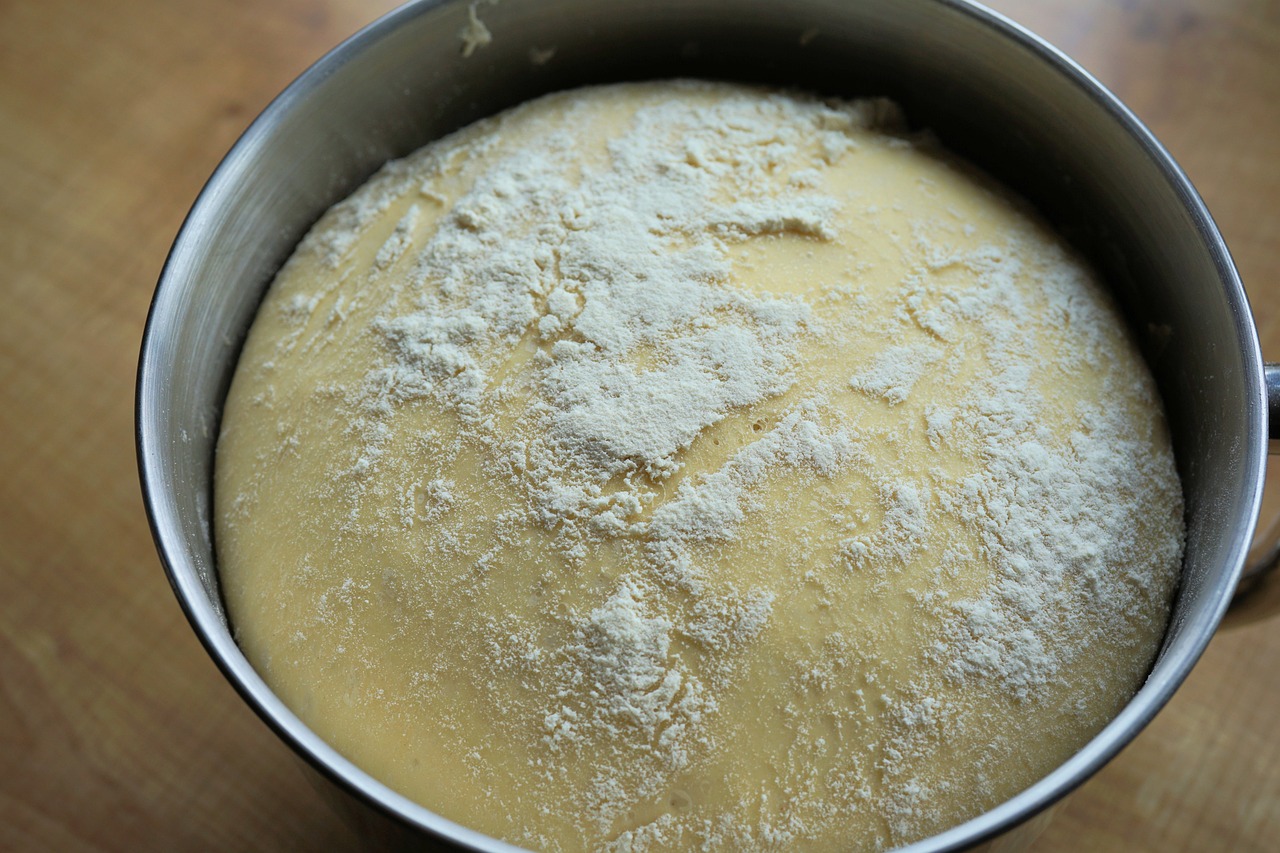
Understanding Batting Options
When it comes to machine quilting, one of the most crucial components that often gets overlooked is the batting. Batting is the layer of material that sits between the quilt top and the backing, providing warmth, texture, and structure to your quilt. Choosing the right batting can make all the difference in achieving the desired look and feel of your finished project. With a variety of options available, it’s essential to understand the characteristics of each type to make an informed decision.
Batting comes in several materials, each with its unique properties. The most common types include cotton, polyester, and wool. Cotton batting is favored for its natural feel and breathability, making it an excellent choice for quilts that will be used year-round. It tends to shrink slightly when washed, giving quilts a lovely, crinkled texture that many quilters adore. On the other hand, polyester batting is known for its durability and resilience. It holds its shape well and is less likely to bunch or shift, making it a popular option for beginners.
Wool batting, while often more expensive, offers a luxurious feel and exceptional warmth without adding excessive weight. It’s ideal for those cold winter nights when you want to snuggle up under a cozy quilt. Additionally, wool batting is naturally moisture-wicking, which means it can help regulate temperature, making it suitable for year-round use.
Another factor to consider is the loft of the batting. Loft refers to the thickness of the batting, which can range from low to high. Low-loft batting is flatter and works well for detailed quilting designs, while high-loft batting adds dimension and is great for more casual or cozy quilts. Here’s a quick overview of the different types of batting:
| Type of Batting | Material | Characteristics |
|---|---|---|
| Cotton | 100% Cotton | Breathable, crinkled texture after washing, good for all seasons |
| Polyester | 100% Polyester | Durable, holds shape well, less prone to bunching |
| Wool | 100% Wool | Luxurious feel, excellent warmth, moisture-wicking |
When selecting batting, consider the intended use of your quilt. If you’re making a quilt for a child or a pet, polyester might be the best choice due to its durability. Conversely, if you’re creating a special heirloom quilt, cotton or wool might be more appropriate for their aesthetic qualities. Additionally, always check the care instructions for the batting, as some types may require special handling during washing.
Lastly, don’t forget to consider the weight of the batting. Heavier batting can add warmth but may also make the quilt bulkier and harder to handle during the quilting process. Lighter batting is easier to work with but may not provide the same level of warmth. It's all about finding the right balance that suits your project and personal preferences.
In summary, understanding the various options for batting is essential for any quilter looking to achieve the best results. By considering the material, loft, intended use, and weight, you can select the perfect batting that complements your quilting style and enhances your finished quilt.
- What is the best batting for beginners?
Polyester batting is often recommended for beginners due to its durability and ease of use. - Can I mix different types of batting in one quilt?
While it's technically possible, it's best to stick to one type of batting for consistency in feel and weight. - How do I care for my quilt after it’s finished?
Always follow the care instructions for your chosen batting, but generally, gentle washing and air drying are recommended.
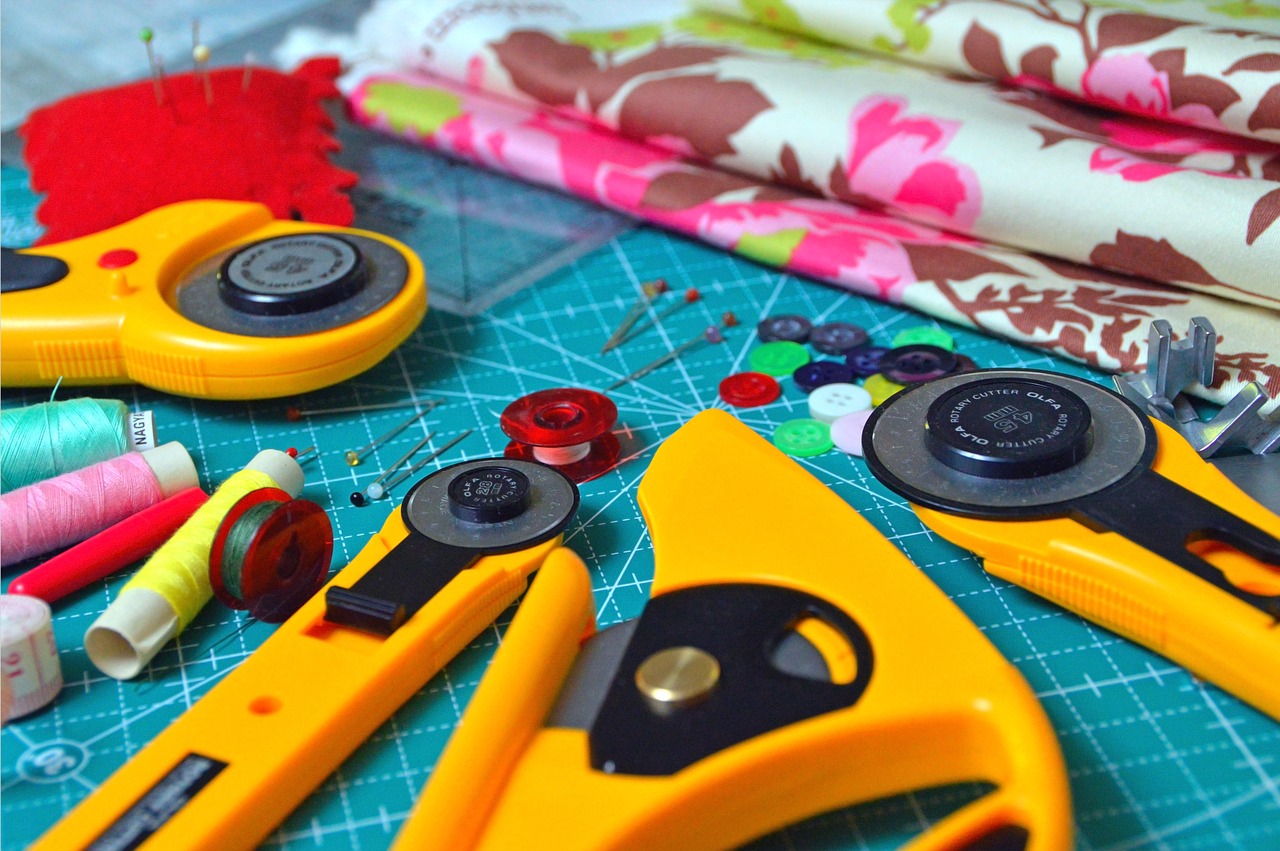
Quilting Techniques for Success
Mastering various quilting techniques is key to achieving beautiful results. Whether you're a novice or an experienced quilter, understanding and applying these methods can elevate your craft to new heights. One of the most exciting aspects of machine quilting is the ability to express your creativity through different techniques. Let's dive into some essential methods that will help you stitch your way to quilting success!
First up is free-motion quilting, a technique that opens the door to creativity and intricate designs. Imagine gliding your sewing machine like a paintbrush, allowing your imagination to run wild! In free-motion quilting, you drop the feed dogs of your machine, giving you complete control over the fabric. This technique is perfect for adding personal touches to your quilts, such as swirling patterns or detailed motifs. To master free-motion quilting, start with the right machine settings. Lower the stitch length and practice on scrap fabric to build your confidence. Remember, practice makes perfect! Try out different designs, and don't hesitate to experiment with your stitches.
On the other hand, we have walking foot quilting. This method offers a more structured approach, ideal for those who appreciate clean, even lines. The walking foot is designed to feed the top and bottom layers of fabric simultaneously, preventing any shifting that can occur during the quilting process. This technique is particularly effective for straight lines and simple patterns, making it a go-to for many quilters. To use a walking foot, simply attach it to your machine and adjust the stitch length to your preference. Whether you're stitching in the ditch or creating parallel lines, this technique ensures that your quilt maintains its integrity and looks polished.
When it comes to quilting, combining techniques can also yield stunning results. For instance, you might start with walking foot quilting for the main design and then switch to free-motion quilting for the intricate details. This blend not only adds depth to your quilt but also showcases your versatility as a quilter. Don't shy away from mixing and matching techniques; the possibilities are endless!
To further enhance your quilting skills, consider investing time in learning about other techniques such as echo quilting, stippling, and even ruler work. Each method has its own charm and can dramatically change the look of your finished quilt. For instance, echo quilting involves stitching parallel lines around a design, creating a beautiful layered effect. Stippling, on the other hand, adds a playful texture, making your quilts feel cozy and inviting. Ruler work can provide precision to your designs, allowing you to create sharp angles and straight lines that are difficult to achieve with free-motion alone.
Ultimately, the key to success in machine quilting lies in practice and exploration. Attend workshops, watch online tutorials, and connect with fellow quilters to share tips and techniques. The quilting community is incredibly supportive, and there's always something new to learn. So, grab your machine, choose a technique that excites you, and start stitching your way to quilting mastery!
- What is the best technique for beginners? Walking foot quilting is often recommended for beginners due to its simplicity and ease of use.
- How can I improve my free-motion quilting skills? Practice regularly on scrap fabric, and consider taking a class or watching online tutorials to learn new designs.
- Can I use a domestic sewing machine for quilting? Absolutely! Many domestic machines are equipped with features that make them suitable for quilting.
- What type of thread should I use for quilting? Cotton thread is a popular choice for quilting due to its strength and variety of colors.

Free-Motion Quilting
Free-motion quilting is like dancing with your sewing machine, allowing you to express your creativity in ways that traditional quilting methods simply can't match. Imagine the freedom of moving the fabric in any direction while your machine stitches, creating intricate designs that are uniquely yours. This technique opens up a world of possibilities, where every quilt becomes a canvas for your imagination.
To get started with free-motion quilting, you'll need to make some adjustments to your sewing machine. Begin by lowering or disengaging the feed dogs, which are the little teeth that move the fabric through the machine. This allows you to move the fabric freely in any direction. Next, equip your machine with a free-motion quilting foot, which provides the necessary clearance for the needle to stitch without obstruction. Don't forget to set your machine to a medium speed; too fast can result in uneven stitches, while too slow can lead to frustration.
One of the most important aspects of mastering free-motion quilting is practice. Just like learning to ride a bike, it takes time to get comfortable with the motion and control. Start with simple shapes like loops, spirals, or meanders. As you gain confidence, you can gradually incorporate more complex designs such as feathers or floral patterns. Remember, practice makes perfect! Consider using a practice quilt sandwich—layers of fabric and batting—where you can experiment without the pressure of creating a final product.
Another tip for successful free-motion quilting is to maintain a steady speed and even pressure on the fabric. Think of it as a rhythm; your hands should move smoothly and consistently, guiding the fabric while the machine does its job. If you find it challenging to maintain that rhythm, try using a quilting ruler or template to help guide your movements. These tools can provide a framework while still allowing for creative expression.
Lastly, don't forget to have fun! Free-motion quilting is all about letting your creativity flow. Don't be afraid to make mistakes; some of the best designs come from unexpected turns. Embrace the process, and soon you'll find yourself not just making quilts, but creating works of art that showcase your unique style.
- What is the best thread for free-motion quilting? It's recommended to use a high-quality polyester or cotton thread that can withstand the tension and movement of free-motion quilting.
- Do I need a special foot for free-motion quilting? Yes, a free-motion quilting foot is essential as it allows for the necessary movement of the fabric without obstruction.
- How can I improve my free-motion quilting skills? Regular practice is key! Consider taking a class or watching tutorials online to gain new techniques and tips.
- Is free-motion quilting suitable for beginners? Absolutely! While it may seem challenging at first, with practice and patience, beginners can quickly learn to create beautiful designs.
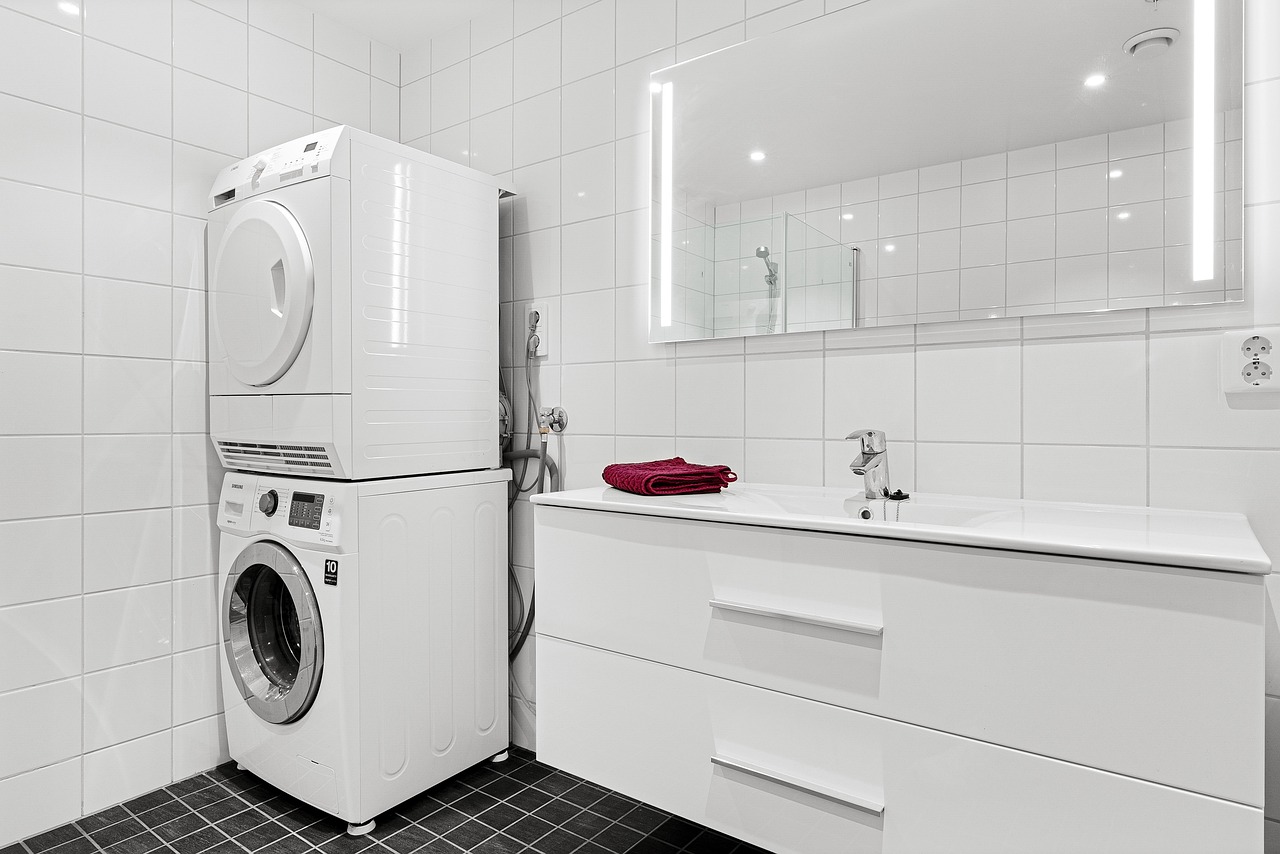
Walking Foot Quilting
Walking foot quilting is a game changer for anyone looking to achieve even stitching and clean lines in their quilts. This technique utilizes a special presser foot that has feed dogs on the top, allowing the fabric to move through the machine evenly. It’s like having a partner in crime who helps you keep everything in line while you stitch away! One of the best parts about walking foot quilting is its versatility; it’s perfect for both beginners and seasoned quilters alike.
When you choose to use a walking foot, you’ll notice how it simplifies the process of sewing straight lines and basic patterns. This is particularly useful for quilting layers together, as it prevents the fabric from shifting. Imagine trying to balance on a tightrope; without the right support, you might wobble and fall! The walking foot acts as that support, ensuring your fabric stays in place while you create.
To get started with walking foot quilting, here are a few essential tips:
- Adjust Your Stitch Length: For best results, set your stitch length to around 2.5 to 3.0. This helps in achieving a neat finish without puckering.
- Use a Good Quality Thread: Opt for a high-quality thread that complements your fabric. This not only enhances the look of your quilt but also ensures durability.
- Practice on Scraps: Before diving into your main project, practice on scrap pieces to get the feel of the walking foot and to fine-tune your technique.
One common question that arises is whether to use a walking foot for all quilting projects. While it’s fantastic for straight lines and simple patterns, it may not be ideal for intricate designs where free-motion quilting shines. Think of it like choosing the right tool for the job; a hammer is great for nails, but you wouldn’t use it for screws! Understanding when to use walking foot quilting versus free-motion techniques will elevate your quilting game.
As you become more comfortable with walking foot quilting, consider experimenting with different patterns. You can create beautiful geometric designs, wavy lines, or even simple stippling. The possibilities are endless! Just remember, the key to mastering this technique is practice. The more you sew, the more confident you’ll become. So, grab your fabric, set up your walking foot, and let your creativity flow!
As you embark on your walking foot quilting journey, you might have a few questions. Here are some common queries that many quilters have:
- Can I use a walking foot on any sewing machine? Most modern sewing machines are compatible with walking feet, but it's always best to check your machine's manual for compatibility.
- What types of projects are best suited for walking foot quilting? Walking foot quilting is ideal for quilts with straight lines, stitch-in-the-ditch techniques, and even straight-line quilting patterns.
- Do I need to adjust the tension when using a walking foot? Generally, the tension should remain the same as when using a regular presser foot, but it's wise to do a test stitch to confirm.
Frequently Asked Questions
- What is machine quilting?
Machine quilting is the process of sewing multiple layers of fabric together using a sewing machine. It involves stitching through the quilt top, batting, and backing to create a finished quilt. This technique allows for intricate designs and patterns that can enhance the overall look of the quilt.
- What type of sewing machine is best for beginners?
If you're just starting out, a domestic sewing machine is often the best choice. These machines are versatile, user-friendly, and usually come with a variety of features that can aid in quilting. Look for models that offer a good stitch quality and a walking foot, which can help with even stitching.
- What is the difference between longarm and midarm machines?
Longarm machines are designed for larger quilts and typically have a wider throat space, allowing for more intricate designs. They are ideal for experienced quilters. Midarm machines, on the other hand, offer a balance between the two, providing more workspace than a domestic machine without the full investment of a longarm.
- How do I choose the right batting for my quilt?
Choosing the right batting depends on the desired warmth, weight, and texture of your quilt. Common materials include cotton, polyester, and wool. Cotton provides a soft feel and breathability, while polyester offers durability and loft. Always consider the final look and feel you want for your quilt when selecting batting.
- What are some essential tools for machine quilting?
Some must-have tools for machine quilting include high-quality threads, various quilting feet (like walking feet and free-motion feet), rotary cutters, rulers, and mats. These tools will enhance your quilting experience and help you achieve professional-looking results.
- Can I use any thread for machine quilting?
While you can use various types of thread, it's important to choose one specifically designed for quilting. Cotton threads are popular for their strength and appearance, while polyester threads offer durability. Always match your thread type to your fabric and batting for the best results.
- What is free-motion quilting, and how do I get started?
Free-motion quilting is a technique that allows you to move the quilt freely under the needle, creating intricate designs. To get started, you'll need to drop the feed dogs on your machine and use a free-motion quilting foot. Practice on scrap fabric to build your confidence and develop your unique style.
- Is machine quilting suitable for all fabric types?
Most fabric types can be used for machine quilting, but it's best to stick to cotton or cotton blends for optimal results. These fabrics hold up well during the quilting process and provide a beautiful finish. Avoid overly stretchy or slippery fabrics, as they can be difficult to work with.



















